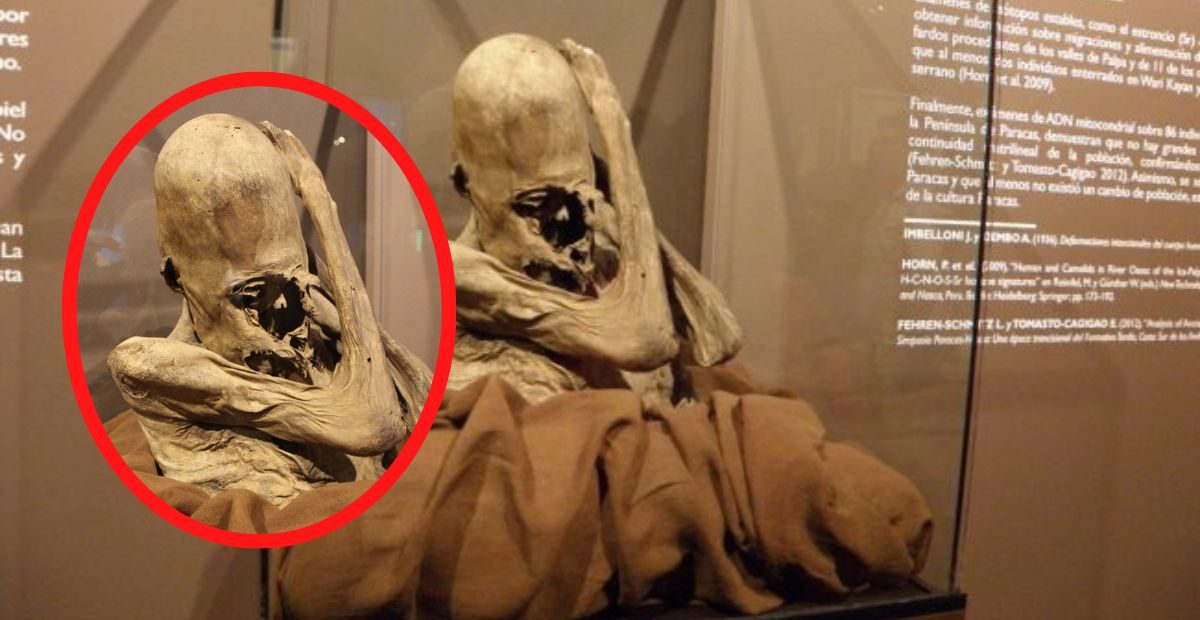An impressively preserved, dried corpse of a Paracas elongated head mummy which was on display at the University of San Marcos in Lima Peru.
It is recorded that this mummy was recovered from huaqueros (grave robbers) in Paracas by the Archaeologist Julio C. Tello in 1925. This elongated head mummy belonged to the Peruvian Paracas culture that developed between 1,000 BC to 200 AD.

In this case, the mummy retains it’s dried skin intact. Her hands are flexed toward her head, covering the left side of her face. Traces of the wrapping textile have remained imprinted on her skin.
The deformed skull is of the elongated type, which traditionally it is believed that this is the results of such practices as cranial deformation that were carried out starting a few days after birth, using bandages, boards and cotton ropes. This type of cranial deformation was common among the Paracas culture and is believed to indicate a possible status, Serial or ethnic differentiations.

However according to author and investigator Brien Foerster, “The head appears to be much larger than normal, and thus is unlikely to be an example of cranial deformation, but could very well have been born like this”.
There is more and more emerging evidence for this theory that some of these ancient peoples were indeed perhaps of a different sub-species of human and were possibly the remnants of a lost race or even could have been examples of possible human-something else hybrids!?






